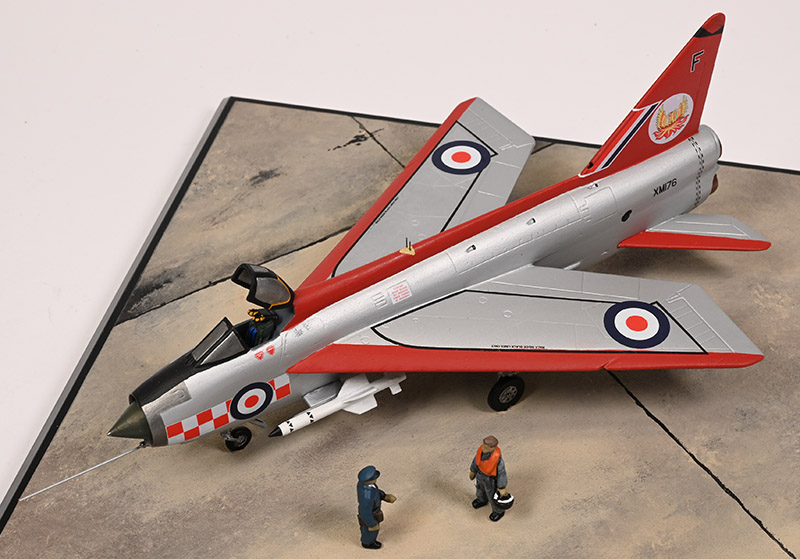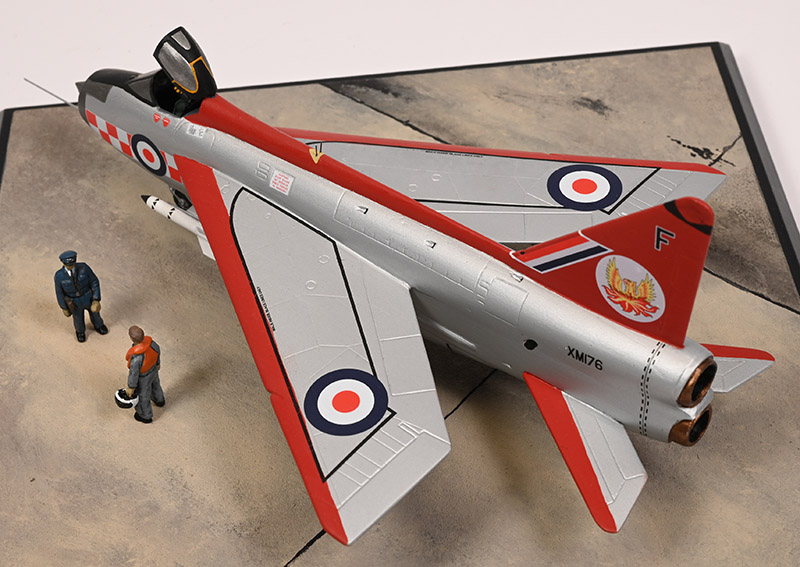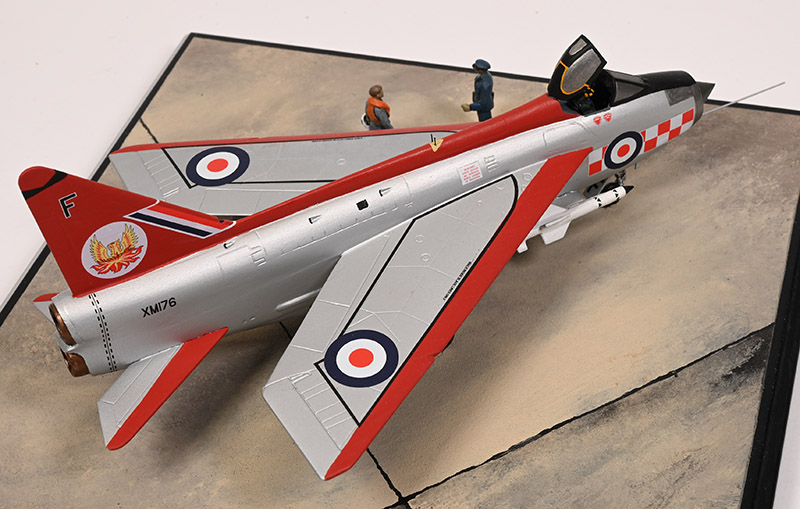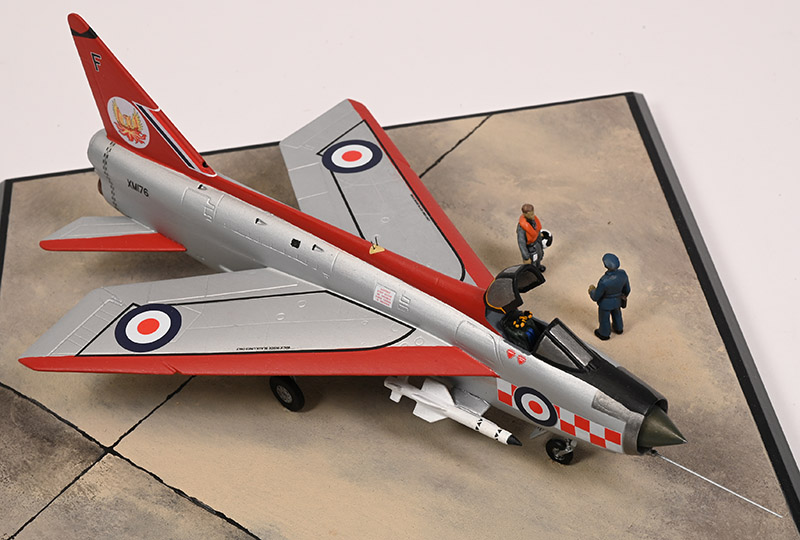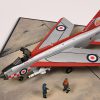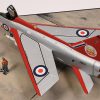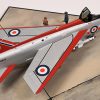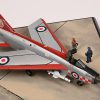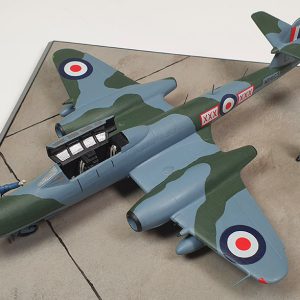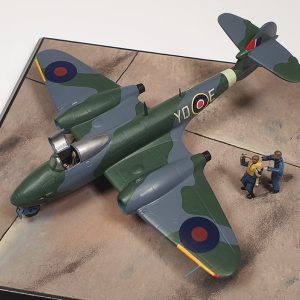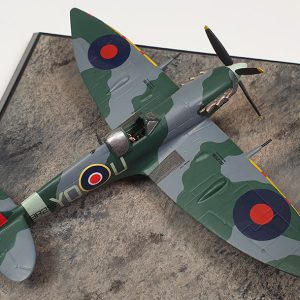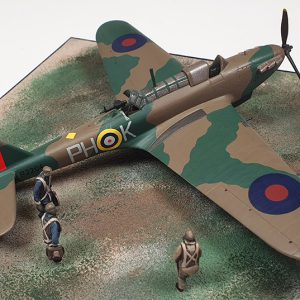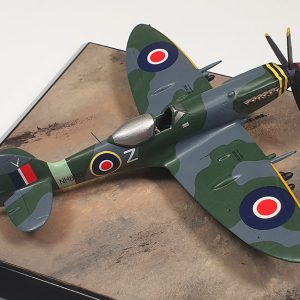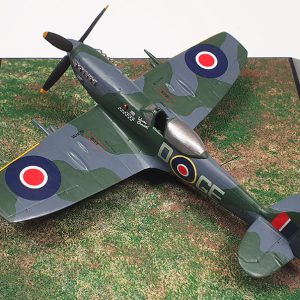English Electric Lightning F Mk 1A XM176 ‘F’
56 Squadron, Firebird Display Team, RAF Wattisham, England, 1963.
The 1957 Defence White Paper established an intention to place the defence of the United Kingdom against air attack in the hands of guided missiles; as a result the only manned interceptor fighter that remained in development was an armed version of the English Electric P.1,. This project had its origins in a series of designs by the company for an aircraft for research into the realm of supersonic flight. In April 1948 the Ministry of Supply issued Experimental Requirement ER.103, followed in November of that year by a contract for English Electric.
The airframe layout was largely decided very early in the design process under Chief Engineer W. E. W. Petter. The sharply swept-back wing, two superimposed jet engines and low-mounted tailplane were evident by the end of 1949. Two prototypes were built with the first, WG760, flying in July 1954 from Boscombe Down. Roland Beamont achieved supersonic speed on dry thrust on its fourth flight. In the early stages of the design there was provision for a gun in either wing root, but this had been abandoned because of aerodynamic issues. When second prototype WG763 flew in July 1955, powered by Avon instead of Sapphire engines, there were mountings for cannons either side of the nose intake. The first order for fifty of the initial service version was placed in November 1956. Now officially named the Lightning F Mk 1, XM165 was delivered to 74 Squadron at Coltishall in June 1960. The lack of range, a recurring feature of British jet fighters, was realised early in the type’s development, and early production aircraft began appearing with an under-fuselage fuel tank which added an extra 250 gallons above standard. In spite of this, and further increases in fuel carrying capacity, the Lightning remained “short-legged” throughout its career. An early modification introduced the ability to attach a flight-refuelling probe beneath the inner port wing, which resulted in the designation Lightning F Mk 1A. As well as the two cannons, sometimes faired over, standard armament was a pair of Firestreak infrared homing missiles. The first delivery of an F Mk 1A was to 56 Squadron at Wattisham in December 1960.
XM176’s operational career got off to an uncertain start when on 14th February 1961 it suffered an inflight fire. Squadron Leader John Rogers nursed the plane back to base on one engine. From 1963, the official aerobatic team of the RAF was the Firebirds, which flew nine of 56 Squadron’s English Electric Lightning F Mk 1A aircraft. XM176 was one of the team’s regular mounts. The team’s name came from the 56 Squadron’s crest which incorporates a phoenix rising from the ashes; a “firebird”.
The display routine was devised with the help of models. Squadron Leader Dave Seward recalled “To get the best formation position, we made nine Airfix model Lightnings and set them out until we achieved that. We then added marks on the jets to line up on.” These small black lines were placed on the wing leading edge slot, with a corresponding mark on the fuselage behind the cockpit. The marks were placed in the same position on the actual aircraft and the pilots found them quite adequate.”
The Firebirds took to the air for their very last display on 15th September 1963 when Wattisham was “at home” to the Royal Observer Corps. During 1963 the team had flown eleven shows but pulling ‘g’ at low level had led to their aircraft accumulating excessive structural fatigue. 56 Squadron resumed its operational role, and Dave Seward departed for a new posting.
XM176 c/n 95063 was built at Salmesbury in 1960, saw active service until 1965, and was scrapped in 1974. During its Firebird display career, XM176, “F” adopted the team’s distinctive scheme of natural metal overpainted with scarlet red leading edges, tail fin and dorsal spine.


